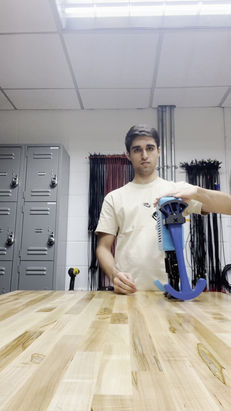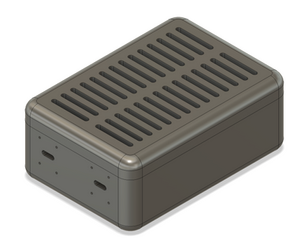Create Your First Project
Start adding your projects to your portfolio. Click on "Manage Projects" to get started
Bio-Inspired Bipedal Robot
Project type
Humanoid Robotics
Video of Robot Development
Pseudo Bipedal Robot Design (Link: https://youtu.be/6Gp1SbyuF7M)
Team Members: Aarya Diwan, Hussain Doriwala
Inspiration: "Ballu" from Bollywood's "Welcome"; Chimpanzee Motion and Crutch Locomotion
Project Description:
In the fall of 2023, I embarked on a pioneering journey at Columbia University to design and create a distinctive bio-inspired bipedal robot. This project, rooted in the exploration of alternative locomotion strategies, marks a significant advancement in my technical expertise in mechanical and software engineering.
Conceptual Genesis:
Our initial inspiration was drawn from the study of chimpanzee motion, analyzing their unique locomotive techniques. This research evolved into an in-depth examination of crutch locomotion, focusing on its distinct trait patterns. At the time of this robot's development, there were no similar designs available online, prompting us to embark on extensive research to conceive our design. I personally delved into academic papers to understand the gait structure of crutch locomotion. This rigorous study, coupled with insights from the biomechanics described in these papers, formed the foundation for our robot's innovative design.
Design and Development:
Together we crafted a robot that challenges conventional robotic movements. Using Fusion 360, we meticulously designed each component for optimal functionality, employing animations, Finite Element Analysis (FEA), and topology optimization.
Our robot features a unique (pseudo) bipedal mechanism, utilizing arms for propulsion in a crutch-like, inverted pendulum configuration, significantly enhancing its gait length. This novel approach is a first in the realm of bipedal robotics.
Technical Integration:
The robot integrates eight servo motors with a Raspberry Pi, controlling and actuating its innovative movement. We utilized Python for the robot's precise actuation process, focusing on the detailed kinematics to fine-tune its capabilities. This architecture represents a thoughtful blend of hardware and software, ensuring a balance between design innovation and functional efficiency.
Future Enhancements:
We aim to further enhance the robot's interaction with its environment by integrating a Raspberry Pi camera module, IMU, and an LED screen, enabling more complex and adaptive behaviors.
Challenges and Learning:
This project presented numerous challenges, each offering invaluable learning experiences. We honed skills in problem-solving, resilience, adaptability, and efficient time management, essential in navigating the iterative and unpredictable nature of engineering projects.
Conclusion:
This project is more than the construction of a robot; it's a venture into new territories of mechanical and software engineering. It embodies our quest to replicate biological movements in robotics and explores various terrain navigation applications. I am profoundly thankful to my colleagues for their collaboration, which was crucial in turning this complex engineering feat into a reality.




















